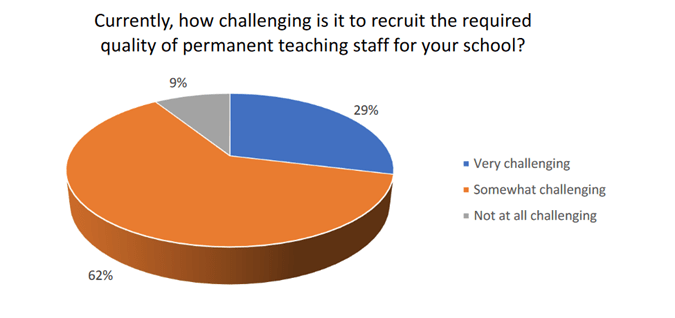COBIS Blog: How to Creatively Enhance Professional Development to Attract and Retain Teachers
1 October 2024
This blog is from one of COBIS’ Supporting Associates.
Written by Laura Liguori, Director, EducatorsAbroad Ltd
Faced with increasing difficulty in recruiting teaching talent, school owners and administrators are looking to new ways to approach employing the best teachers for their pupils. In this blog we will highlight the teacher supply crisis, creative professional development programmes and their impact on recruitment and retention.
According to the latest ISC Research, 2024, international schools are growing at a phenomenal rate. In the last five years (2019-2024) new international schools have increased by 15%, student attendance at international schools has grown by 13% and there has been a 15% growth in the number of teaching roles that need to be filled. What is driving this growth? Expanding wealth in regions such as Southeast Asia, Central Asia and the Middle East, high demand for outstanding international education and parental preferences to have their children educated closer to home. Some studies report that by 2028, it is projected that between 70,000 and 160,000 teachers will be needed to meet the growing demand. How is this impacting the recruitment and retention of talented teachers?
In the COBIS Annual Research Survey, 2023, amongst the 161 schools surveyed, 91% said it was either somewhat or very challenging to recruit quality teaching staff.

Source: COBIS Annual Research Survey, 2023
Just How Severe is the Teacher Supply Crisis?
Last year in England, nearly as many teachers left the profession as entered it. The Department for Education was only able to recruit 51% of their target of trainee teachers to start training in September 2024. In the USA, more than 4 in 10 teachers are likely to quit their jobs in the next two years. At the start of the academic year 23/24, there was a shortfall of 8,500 teachers in Quebec, Canada and in Ireland, 2000 long term vacancies need to be filled in schools. In Australia, at the end of last academic year, 2000 teaching vacancies were left unfilled and 10,000 classes had to be merged or cancelled. In New Zealand, 56% of principals had to employ untrained or unqualified teachers because there were not enough suitable qualified and/or trained teachers.
What are international schools doing to compete for talent when recruiting?
Some international schools are increasing salary and benefits packages to attract and retain highly qualified teachers. Many international schools are not able to do so. Recruitment budgets are becoming more costly due to costs associated with recruitment agencies and other forms of marketing open roles.
Increasingly, teachers are accepting offers from schools which provide the most lucrative salary and benefits packages. However, teachers, such as local hires who may not have gained an internationally recognised teaching qualification such as Qualified Teacher Status (DfE, UK) consider professional development to be important. In the same COBIS survey, 37% of schools said that they are increasing recruitment efforts for international staff already in the country and 36% said they are increasing the recruitment of local nationals. Challenges these schools face include shifting parental perceptions – can local hires deliver an outstanding education to our children?
Creative Professional Development and Shifting Perceptions

To broaden their candidate talent pool, an increasing number of international schools are creating opportunities for teachers to gain qualifications such as the iPGCE, or QTS via the assessment only route. For example, an international school in Thailand enrolled at least three local hires into EducatorAbroad’s AOQTS support programme. A British international school in Georgia, due to the challenges of recruiting highly qualified expatriate teachers, is supporting locally hired teachers to gain QTS via the assessment route only. EducatorsAbroad is working with schools globally to enhance their professional development programme by adding the AOQTS option as a route to becoming fully qualified.
Summary
The growth of international schools, coupled with a global teacher supply crisis, presents challenges in recruitment and retention. When teachers know that schools are willing to support them in achieving internationally recognised teaching qualifications, they are more likely to choose to work for these schools. Teachers are also more likely to stay with a school longer than the average 2-3 years that highly qualified expatriate teachers stay. Higher retention rates lead to stable school communities, high standards of teaching, and the consistent attainment rates expected by fee paying parents.
To find out more about how EducatorsAbroad Ltd can support your teachers to gain Qualified Teacher Status click here.


